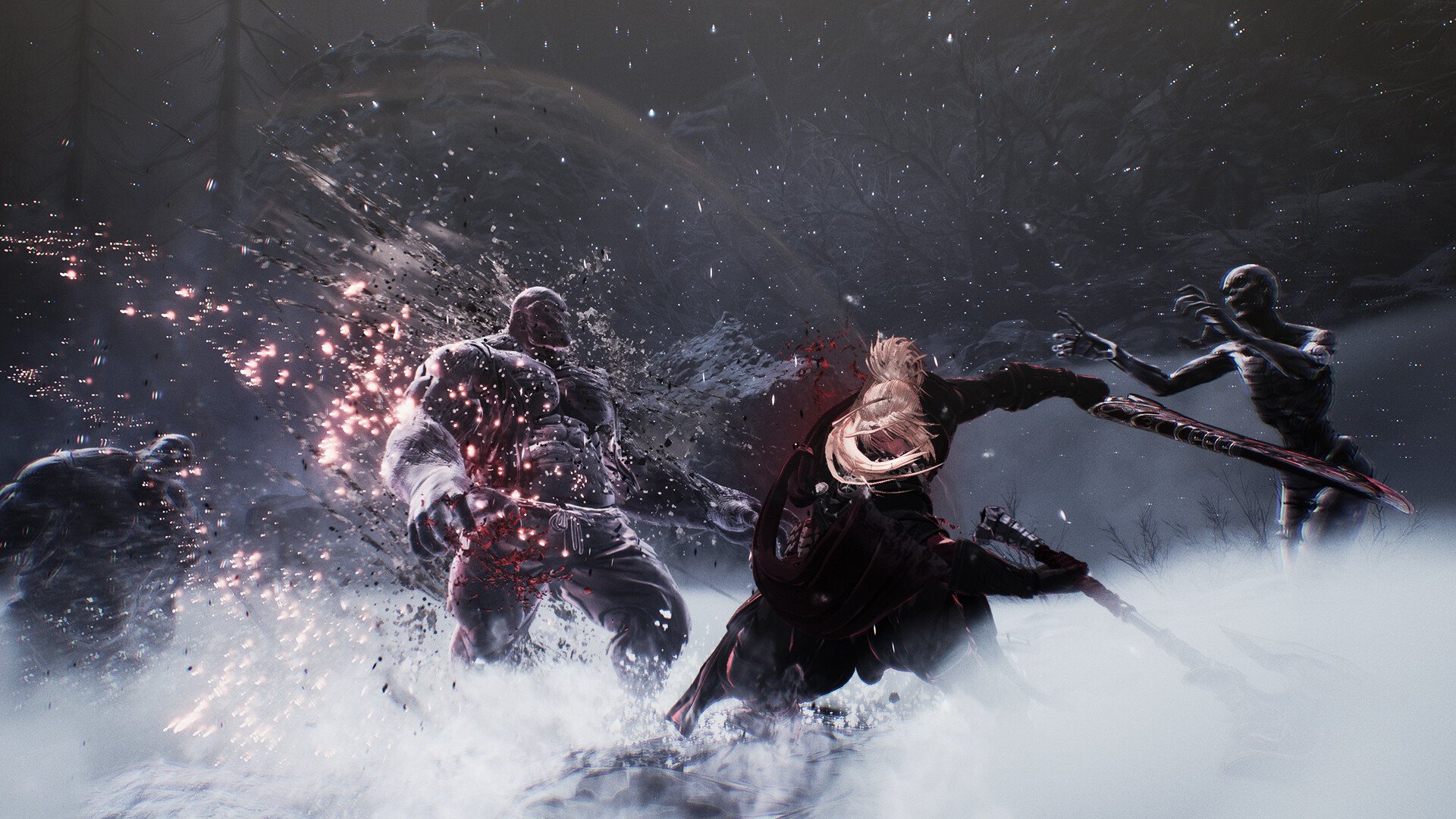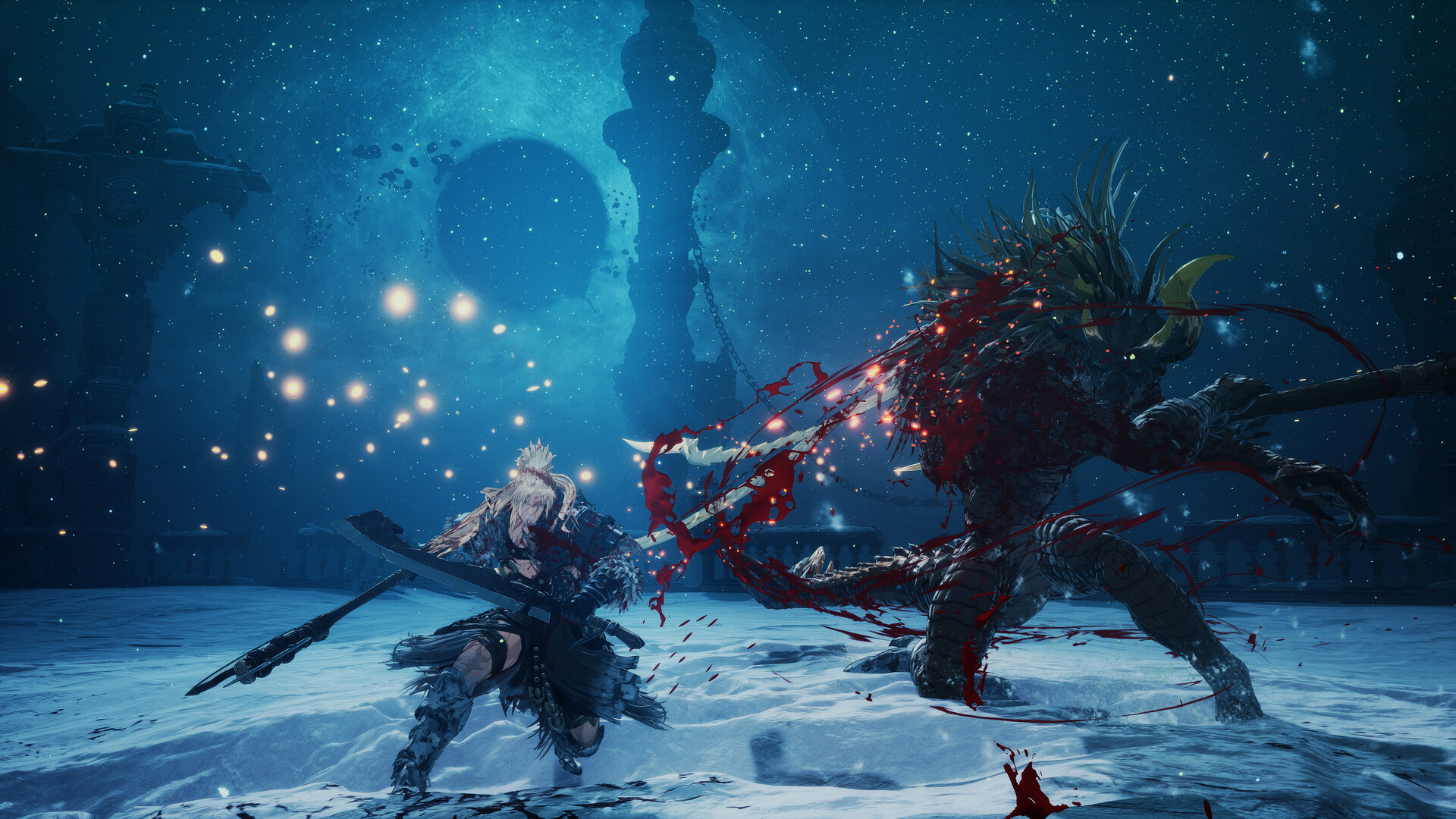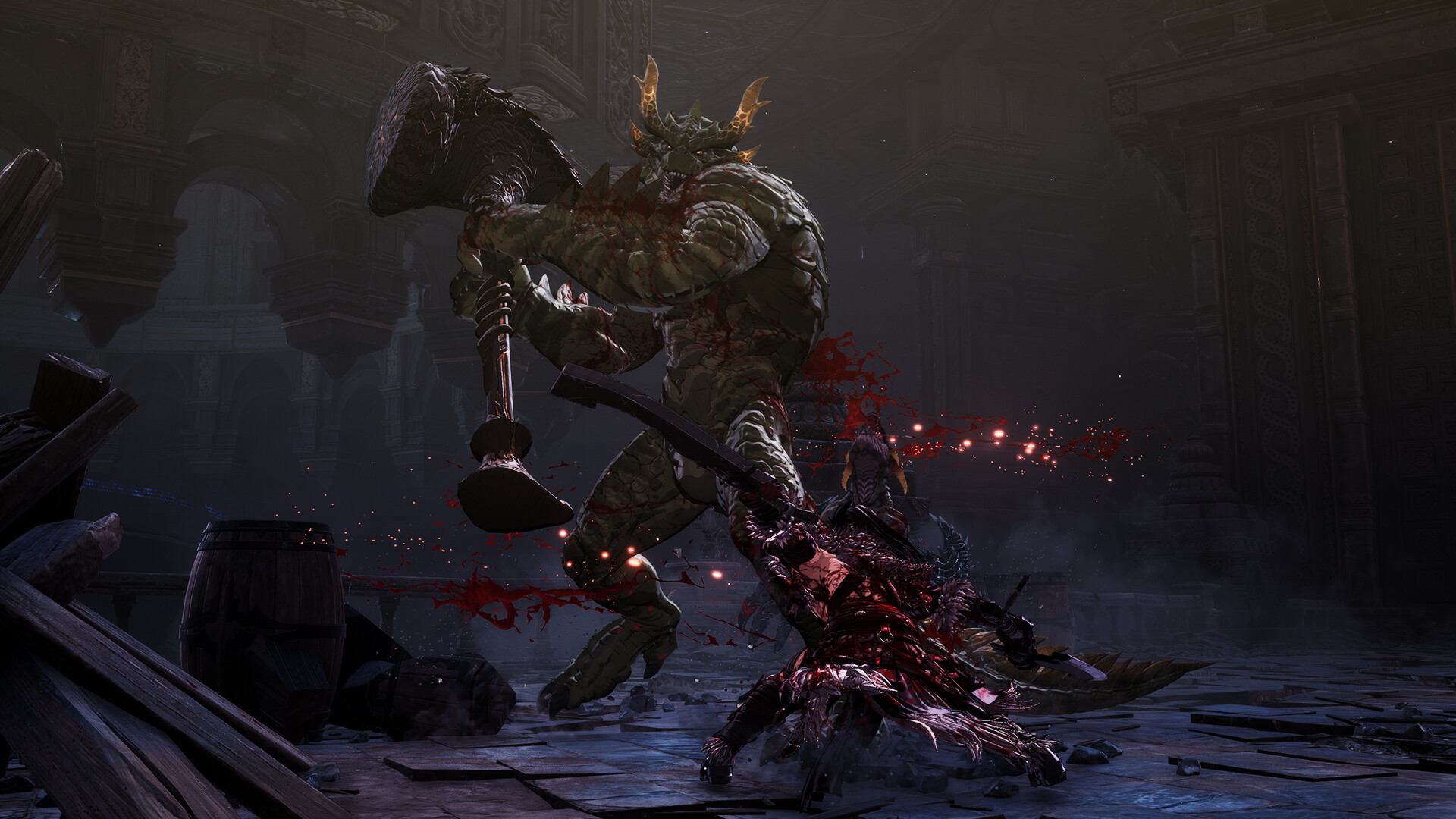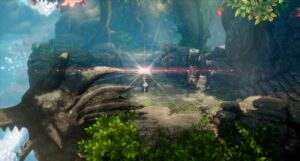
If there’s one plot device that comfortably, relentlessly drives a video game plot on its own, it’s revenge. That urge of getting back at the source of betrayal; of exacting punishment that’s several orders of magnitude higher. When paired with anger, it can offer a unique introspection into a character’s psyche and the morality of their actions. In others, it’s justification for beating anything and everything in your path to a bloody pulp.
The First Berserker: Khazan offers shades of both, but there’s a lot more going on than meets the eye. The story follows the former general who after saving the Pell Los Empire from the Berserk Dragon is accused of treason. While his friend, Ozma, suffers a horrible death, Khazan is mercilessly tortured, the tendons in his arms severed before exile.
The story picks up during Khazan’s transport through Mount Heinmach, a mysterious force called the Blade Phantom disrupts his escort, setting him free while simultaneously possessing his body. Its purpose is unknown – for the time being, the player must find a way out, dealing with any straggling soldiers and other beasties on the mountain.
The First Berserker: Khazan is based on Nexon’s Dungeon and Fighter series, with the sordid tale of the former hero set hundreds of years prior. Khazan does make some appearances through Dungeon Fighter Online, but this is essentially his brutal origin story.
Said brutality carries over to the gameplay as well. The First Berserker makes no bones about its roots, taking inspiration from Dark Souls with its shortcuts, stamina meter, light and heavy attacks, stance breaking, bonfires (known as the Blade Nexus here) and respawning enemies. Lacrima is your currency for leveling up, and it’s dropped upon death. Of course, you can also dodge – proper timing will result in a Brink Dodge.
However, the other half of Khazan’s gameplay loop is like Sekiro: Shadows Die Twice, specifically its parrying system. The right timing means losing negligible stamina while reducing some of the enemy’s fortitude gauge. Deplete it completely, and you can execute a powerful critical blow. Also, while Lacrima is used to increase stats, thus affecting the scaling of weapon damage (on top of other things), you earn separate XP towards Skill Points for unlocking new abilities, which we’ll get into later.
From the outset, it sounds straightforward but weird. What makes Sekiro work is the lack of a stamina bar, where messing up a parry can deplete your health and poise, thus making subsequent parries that much more risky. In this case, not timing a parry and instead blocking will deplete more stamina. Running out leaves you temporarily stunning, which can be a death sentence against bosses with multiple attacks. You also have to account for this when attacking – get too greedy, and you might not have enough stamina to deal with the enemy’s follow-ups.
And yet, after going hands-on with the closed beta for The First Berserker: Khazan, consisting of its three story chapters, I’m convinced that it’s a solid mix of what should be two opposing playstyles. The result is a challenging Souls-like – one that may not always feel fair but still provides an exhilarating rush.
Of course, the previous descriptors only scratch the surface. The first chapter feels pretty measured in enemy types and mechanics, yet it teaches you the basics. All of it comes into play against the boss, Yetuga, while educating the player on breaking parts, avoiding (or failing to avoid) command grabs, and status effects.
It’s chapter 2 where the game truly comes into its own. In Stormpass, Khazan must pass three trials to exorcise the Blade Phantom, which introduces the other weapon types. The Greatsword is heavy but is adept at cleaving multiple enemies with its attacks. It also has a shoulder attack as its sprinting attack and a charged attack, which deals extensive damage, even if it leaves you temporarily vulnerable.
Then there’s the Spear, my favorite, possessing more reach and sweeping attacks. Subsequent upgrades can unlock Moonlight Stance, where a successful light combo results in attacks dealing additional damage thanks to afterimages. It also applies to all attacks – using skill that allows for transitioning from a heavy attack into a stabbing light attack and both deal additional damage thanks to Moonlight Stance.
Each weapon type has interesting skills like the dual-wield’s charged heavy attack inflicting a wound on enemies or the Greatsword’s ability to charge light attacks. It gets even crazier when factoring in abilities like Whirlwind, which results in Khazan taking to the skies and landing on enemies with a spinning attack, or Ruthless, a slashing combo that gets faster with consecutive hits.
You can unlock skills which result in Brink Dodges dealing more damage on their attacks, changing completely, or even recovering stamina, offering a way to keep up the tempo with the axe and sword. While much of the gameplay is grounded, its skills strike a balance between stylish and brutal.
If that wasn’t enough, The First Berserker offers a loot grind. Though the starting Common armor and weapons will increase defense and some stats, you’ll eventually receive Rare drops, some even belonging to Gear Sets, which unlock powerful bonuses when paired with matching items. It’s somewhat reminiscent of Nioh, but that’s not the only common factor – eventually, enemies will unleash Burst Attacks, which are unblockable, but you get the Counterattack ability. It functions somewhat like the Burst Counter from Nioh 2 in terms of timing, but pull it off, and all of your stamina regenerates, thus allowing you to press the attack.
Then there are the other Spirits you can summon from chapter 3 onwards, with the Spirit of Advocacy offering assistance while the Remnant of Adversity challenges you to a fight. Defeating the latter yields rewards like the Lacrima of Circulation (used for summoning) and gear, which can be a great way to farm gear sets or shore up weaknesses. I haven’t even gotten to the Elite enemies, which seem capable of executing Counterattacks on top of packing a punch (and better rewards).
However, the highlight of the experience is the boss fights without question. The Blade Phantom felt like a massive difficulty spike between its multitude of weapons, teleporting attacks, seamless transitions between everything, and delays.
And yet, it taught me so much about changing up builds, trying new weapons, and fully exploiting the extra time from his Fortitude-broken state to deal more damage before exacting a critical blow. Those worried about spectacle shouldn’t worry since Viper, the boss in Chapter 3, starts like a more jacked-up version of those spear-wielding dragon warriors before turning into something else entirely. Its second phase is frightening yet undeniably cool.
Though it’s out in early 2025, I enjoyed much of my time with The First Berserker: Khazan. Its action is undeniably crisp yet punishing, but the environmental design and presentation are also quite strong. Going from Heinmach and its steep drops to the halls of Embars’ temple to stop a dastardly device felt natural and smooth. There were various routes and optional areas to explore, some unearthing chests with loot and others offering Soulstones to destroy in exchange for permanent buffs. The anime-esque art style also looks sleek while retaining the grim tone of Khazan’s journey.
Speaking of vengeance, the closed beta gave the feeling of just getting started on that path, with Khazan likely to plunge further into darkness when all is said and done. As much as I like the stoic portrayal, I’m curious to see him embrace the Berserker within and give in to anger. We’ll see how the full game fares, but for now, The First Berserker: Khazan is already hitting all the right Souls-like notes.


















